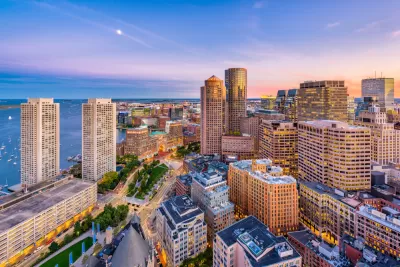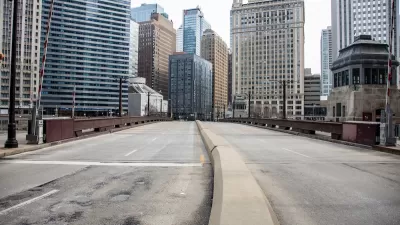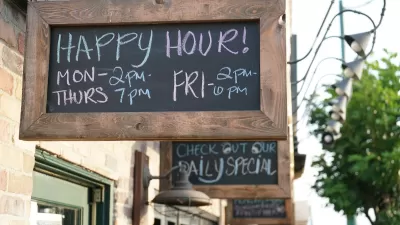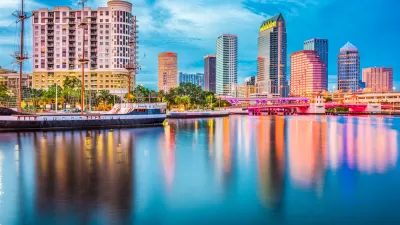A new report suggests that despite recent challenges, the ‘value proposition’ of urban activity centers remains as strong as ever.

An analysis from the Bass Center for Transformative Placemaking presents evidence in favor of the argument that, despite pre-pandemic growth in suburban job centers and the pandemic-induced clearing out of central business districts, “cities’ value proposition is still very much intact.”
Tracy Hadden Loh and Jennifer S. Vey outline the results of the report for Bloomberg CityLab, writing that “these findings can inform city leaders on how workplace needs might continue to evolve — and how they can deploy policy and funding to shape a more resilient economic future.”
Presenting their evidence, Loh and Vey note that “In our model, every increase in median activity center job density of 1,000 jobs per square mile is worth an additional $1,723 in output per worker across the metro area.”
While correlation is not causation, this suggestive relationship between place and productivity is important for employers and workers to consider as they make decisions about where to locate — and for urban leaders to recognize as they work to sway those choices in their favor.
According to Loh and Vey, “There is substantial measurable value to employers and the economy when firms locate their workers in close proximity not just to their colleagues, but to workers from other firms and sectors.”
The authors describe steps cities can take to keep downtowns vibrant, such as ensuring frequent and reliable transit services to reduce the cost and time spent commuting, concentrating housing near job centers, and investing in inviting, safe, accessible public spaces that make people want to spend time in cities.
FULL STORY: The Productive Power of Urban ‘Activity Centers’

Planetizen Federal Action Tracker
A weekly monitor of how Trump’s orders and actions are impacting planners and planning in America.

Trump Administration Could Effectively End Housing Voucher Program
Federal officials are eyeing major cuts to the Section 8 program that helps millions of low-income households pay rent.

The 120 Year Old Tiny Home Villages That Sheltered San Francisco’s Earthquake Refugees
More than a century ago, San Francisco mobilized to house thousands of residents displaced by the 1906 earthquake. Could their strategy offer a model for the present?

Philadelphia Councilmember Proposes Transit Access Fund
The plan would allocate 0.5 percent of the general fund toward mobility subsidies for low-income households.

Texas Bill Would Ban Road Diets, Congestion Pricing
A Texas state senator wants to prevent any discussion of congestion pricing and could suspend existing bike lane and sidewalk projects.

USDOT Threatens to Pull New York Highway Funding
The Trump administration wants the state to kill New York City’s congestion pricing program despite its demonstrated success.
Urban Design for Planners 1: Software Tools
This six-course series explores essential urban design concepts using open source software and equips planners with the tools they need to participate fully in the urban design process.
Planning for Universal Design
Learn the tools for implementing Universal Design in planning regulations.
Ada County Highway District
Clanton & Associates, Inc.
Jessamine County Fiscal Court
Institute for Housing and Urban Development Studies (IHS)
City of Grandview
Harvard GSD Executive Education
Toledo-Lucas County Plan Commissions
Salt Lake City
NYU Wagner Graduate School of Public Service





























